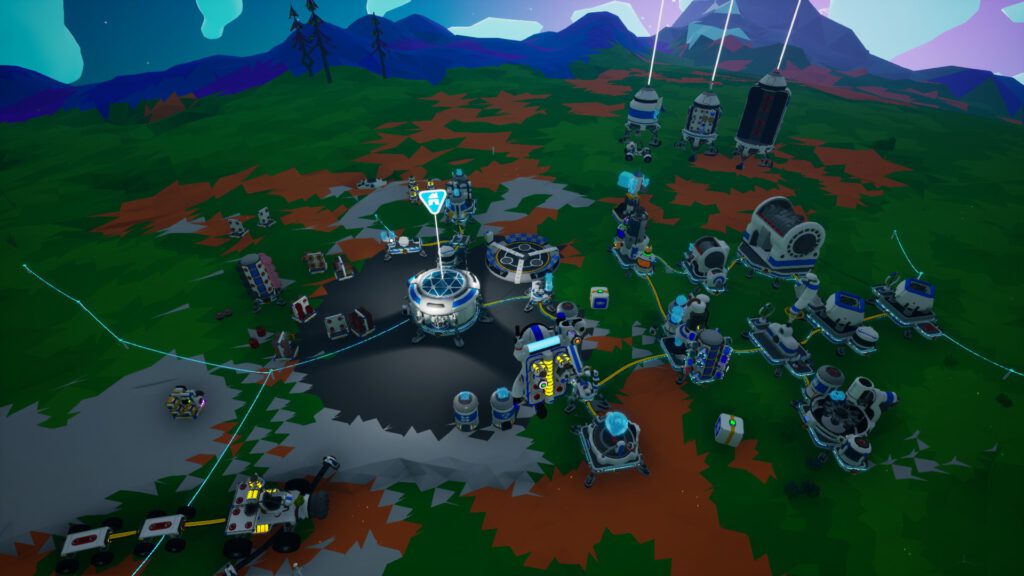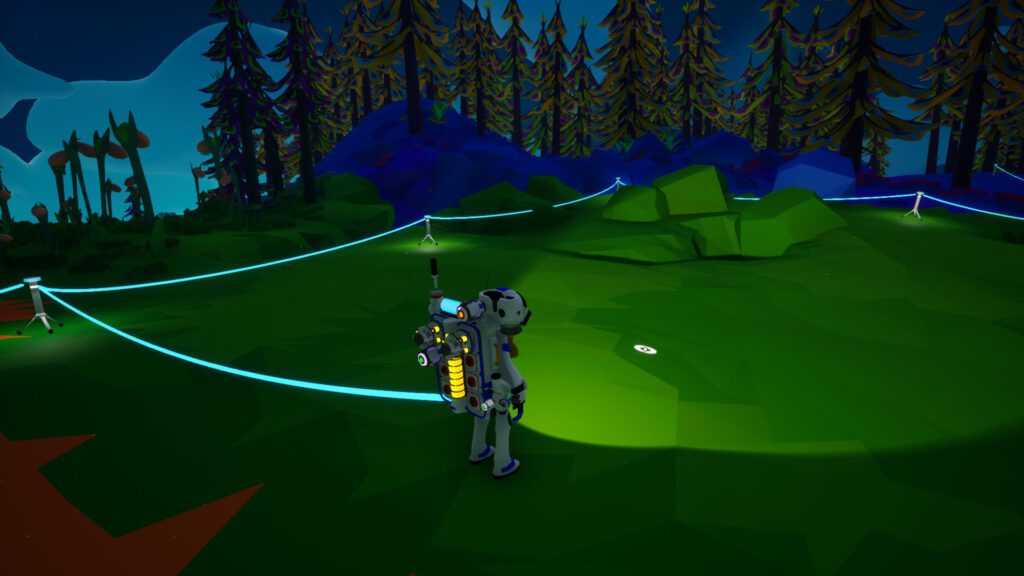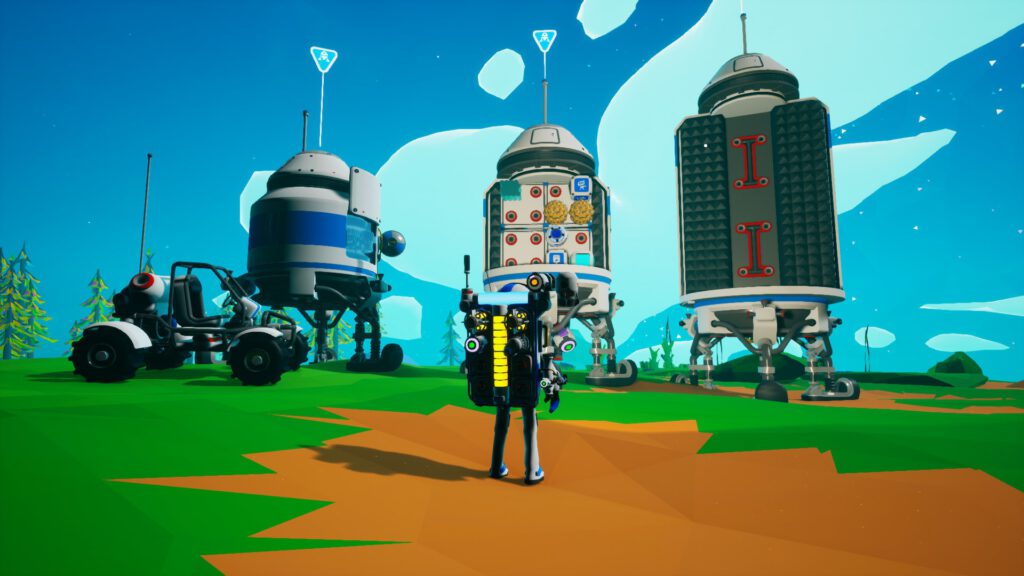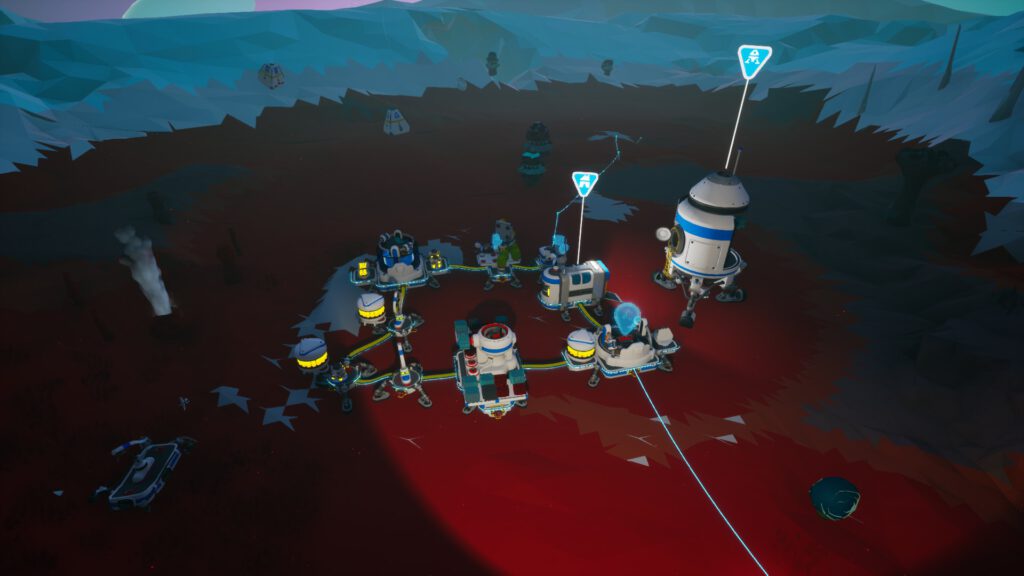ASTRONEER is a 3rd person sandbox game that lets you explore seven different worlds with fully destructible terrains and an innovative base building system that lets you link different modules together. You need to collect resources, build up a base and research new technologies. These technologies allow you to travel between worlds, gather new resources, and to build an even bigger base that is capable of manufacturing complex materials. I played this game for over 55h before I reached the official end of the game, here is what I thought.

Resources
You spent most of your time gathering resources. The terrain is fully destructible and your digging tool can be modified with different power booster for especially hard rock or base building. The digging in underground caverns reminded me a lot of Minecraft. You will find plenty of resources in the terrain which will be transferred into your backpack while digging.
Your inventory is pretty small and will become even smaller if you researched quality of life improvements like work lights, an O2 tank or batteries as they share the same space. You can involve vehicles on your resource expeditions but they are usually really hard to handle in caverns and only of limited use for resource hauling outside of the beaten path. Drilling with vehicles is an absolute nightmare. This leaves you with the option to spent the majority of your time building reliable roads or requires you to spent a lot of time backtracking. Something like an elevator would have been fun here.

Base Building
The base building system is pretty neat. There are 3 different socket types in the game. The small sockets store individual resources and items. They are the same ones you have in your inventory. The medium sockets can hold medium items and the the large sockets can hold large items. Each building requires a specific socket and these sockets are provided by platforms you place onto the ground. This socket principle is pretty self-explanatory and it’s pretty fun to ‘click’ your base together. You have to connect your buildings with electrical cables to utilize solar or wind power. Wind generator and solar panels have different output levels on different worlds so you need to adjust your outpost composition according to that. As those energy types do not continuously produce energy you have to store the energy in batteries to consistently provide energy for your base. This makes energy management a lot more interesting as you have to account for spikes in energy consumption. The Factorio vibes are not as strong as in Satisfactory but you can clearly feel the inspiration the first time you build an automatic ARM – and this is despite the lack of conveyer belts. The game offers base automation but the required amount of resources to finish the game does not make it really necessary to go beyond the absolute basics.
Exploration
The early exploration in the early part of the game is fun. Your O2 supply is limited and fresh O2 is provided by a network of tethers. You are therefore limited to the range of your tether network when exploring during the first hours of the game. You can expand your network by placing new tethers which are pretty cheap to make. While some might feel like this is very restrictive I appreciate the tether network to guide me back to my home base. At some point you will have vehicles available that enable you to roam around more freely without tethers as they serve as a mobile supply for O2. The untamed wilderness is a big damper on the fun exploration with vehicles though, as your vehicle frequently flips or gets constantly stuck in the environment. You really have to pave roads everywhere.

There are little ‘puzzle boxes’ sprinkled all over the world that require you to provide a certain resource or a certain amount of energy in exchange for some research points. Crashed space ships have useful resources or items inside. While this is really interesting in the first couple of hours, running around on the surface gets boring rather quickly. As you dig yourself to the core of the 2nd or 3rd planet you will grow increasingly disengaged with the world in front of you. There are huge underground caverns with interesting looking elements that do not offer anything of value to the games progression but a couple of research points. At around 1/3 of the game I just ignored all of that beauty. Games like Subnautica offered new resources at every depth level and this made exploration way more rewarding as you actually had to engage with your new environment.
The best part of the exploration aspect is building rockets! It’s a lot of fun to prepare for a trip to another planet or moon. You have to decide what to take with you to get your outpost running as your storage capacity is very limited and crucial resources might not be readily available at your destination. Visiting new planets is necessary to obtain special resources like gases or minerals that are vital to your technological progression.

Gameplay
The game is guided by missions which tell you what to do next. These missions are optional but seem to be tailored towards an ideal progression. You have to activate a shrine on the planet’s surface and you have to then dig towards the center of planet to activate its core. You do that seven times with little to no meaningful difference. Sometimes the terrain requires a stronger drill. Sometimes there is a hyper aggressive plant. Sometimes there is less wind or more sunlight. Sometimes a crucial resources is a bit rare – that is it. I would have loved some more meaningful variation. ASTRONEER can be played in multiplayer and supports sessions with up to 4 players.

Conclusion: 4/5
| Pro | Con |
| + fun base building + fun power management + building rockets | – main quest is very repetitive – no incentive to explore the majority of caverns – gathering resources with vehicles is painful – all worlds feel the same |
Hope that helps.
Leave a Reply
You must be logged in to post a comment.